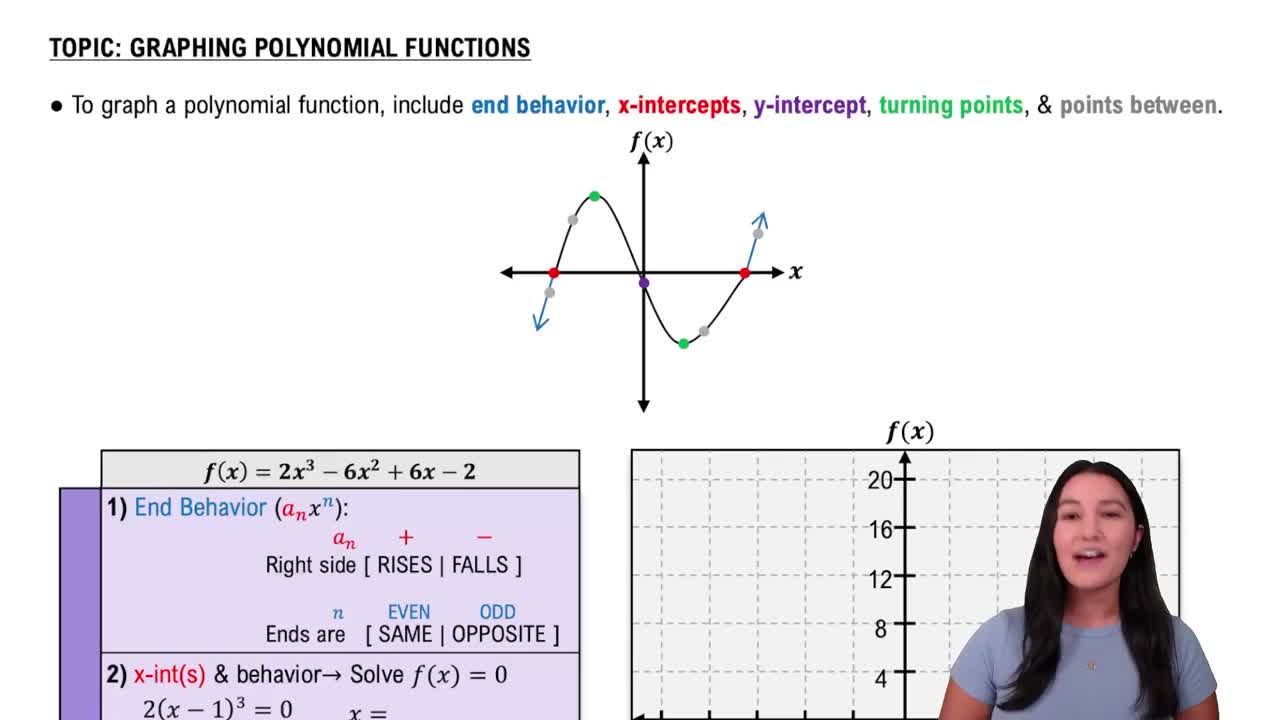Here are the essential concepts you must grasp in order to answer the question correctly.
Polynomial Functions
A polynomial function is a mathematical expression involving a sum of powers in one or more variables multiplied by coefficients. The general form of a polynomial in one variable is f(x) = a_n*x^n + a_(n-1)*x^(n-1) + ... + a_1*x + a_0, where 'n' is a non-negative integer and 'a_n' are constants. Understanding the structure of polynomial functions is essential for graphing them accurately.
Recommended video:
Introduction to Polynomial Functions
Factoring Polynomials
Factoring a polynomial involves expressing it as a product of its simpler polynomial factors. This process is crucial for identifying the roots or x-intercepts of the polynomial, which are the values of x that make the polynomial equal to zero. For example, the polynomial f(x) = -x(x+1)(x-1) is already factored, making it easier to graph by identifying its roots at x = 0, x = -1, and x = 1.
Recommended video:
Introduction to Factoring Polynomials
Graphing Polynomial Functions
Graphing polynomial functions requires plotting points based on the function's values and understanding its behavior at various intervals. Key features to consider include the x-intercepts (roots), y-intercept, and the end behavior of the graph, which is influenced by the leading term of the polynomial. For the function f(x) = -x(x+1)(x-1), the graph will cross the x-axis at its roots and will open downwards due to the negative leading coefficient.
Recommended video:
Graphing Polynomial Functions






